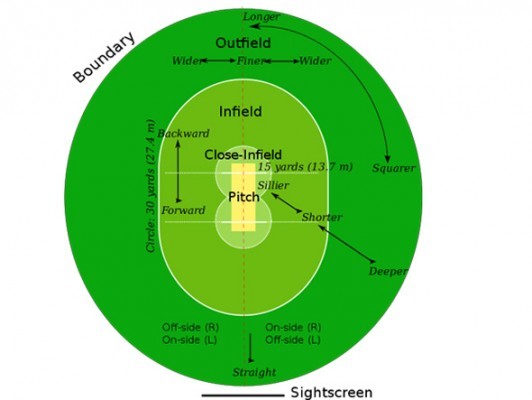Reproduced with permission from Business Insider. We’ve pushed this back up the page because the aftermath of the England victory will see some new interest. We’ll have live coverage of India v Ireland tomorrow (Sunday).
~
IRELAND’S CRICKETERS KICK off their 2011 ICC Cricket World Cup campaign early tomorrow morning when they take on Bangladesh in Dhaka.
Now is the prefect time to jump on the bandwagon, but if you don’t know the difference between a bowler and a bail, here are the basics you need to get started.
Cricket, on the face of it, is a fairly simple game that can be played in three formats — test matches (which last 5 days), one-day internationals (ODI), and the Twenty20 (which lasts about 3-4 hours).
Two teams of eleven face-off against one another batting, fielding and scoring runs, much like baseball. The specifics get a lot trickier. In the interest of simplicity (and because that’s how they do it at the World Cup), let’s stick with the ODI.
Batting and Bowling
There are batsmen who score runs, while the defence (“bowlers”) tries to get them out. But there also a lot of key differences that you to need understand to follow the action.
Most of the key action takes place on pitch, a 22-yard long box with a wicket at each end. A wicket is actually three stumps (literally three sticks stuck in the ground) with two bails resting on top of them. The bails are not fixed and can be knocked off the stumps. (More on that later.)
Plays begin when the bowler delivers the ball in an attempt to hit the wicket, while the batter “defends” the wicket with his bat.
There are TWO batsmen on the field at the same time, one at each wicket. When the ball is hit, they try to run back and fourth between the wickets as many times as they can without getting put out. (More on that in a bit.) Every time they make it one length of the pitch, the team gets one run.
The other way to get runs is to hit the ball out of the park. If the ball reaches the boundary of the field on a bounce, you get an automatic four runs. If you hit it out in the air (like a home run), you get six runs without actually having to run the pitch. (That’s why it’s called “a six.”)
The bowler doesn’t changes ends, so if the team scores an odd number of runs, the second batsman (who didn’t hit the ball) ends up facing the bowler, so then he takes his turn batting. Batters stay on the pitch until they are put out, and then the next batter on his team takes his place.
There are two important bowling penalties that you should know, and this gets a little technical but we’ll try and break it down. An umpire will call a no ball if a part of the bowler’s foot is in front of the crease (i.e. completely over the white line), if he throws rather than bowls the ball (this depends on the action of the arm, some bowlers have been accused of chucking but Sri Lankan Muttiah Muralitharan actually has an arm defect), if it bounces more than once, or if the bowler changes hands or side of the wicket without notifying the umpire. A no ball gets the team an extra delivery in an over, and batsman can only get runs if he manages to score off the ball. Here’s a classic instance of a batsman not being bowled out because of a no ball.
Like a no ball, if a bowler delivers a wide the batting team picks up a run and the bowler has to re-deliver a ball. An umpire will usually call a wide if the ball passes to wide or high above the batsman making it impossible for him to hit it. Like a no ball a batsman can only be dismissed off a wide ball if he handles the ball, is out hit wicket, obstructs the field, is run out, or stumped. We promise this gets easier once you actually watch the game.
Read more of the beginner’s guide to cricket at BusinessInsider > | Alternatively, check out TheScore.ie’s bluffer’s guide to the 2011 tournament >


